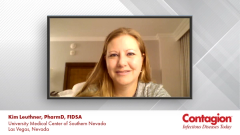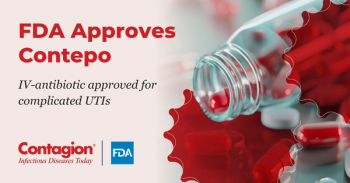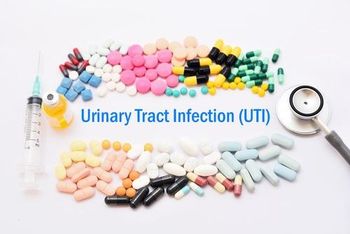
Approaching Treatment for Complicated UTIs
An infectious disease clinical specialist shares treatment considerations for patients with complicated urinary tract infections, including for patients with comorbidities and older patients, and reviews antimicrobial therapies for multidrug-resistant UTIs.
Kim Leuthner, PharmD, FIDSA: What are some of the individual patient factors that need to be considered when picking therapy for a patient with a complicated UTI [urinary tract infection]? The biggest 1 is their own history. Hopefully, with the integration of better health care systems, it’s much easier to communicate between hospitals and find out what’s been going on with the patient. If that’s not a possibility, we need a thorough understanding of what antibiotics they’ve had, what cultures they’ve had, how long they’ve had the complications, and whether the complications are removable. That’s 1 big thing; if you can remove the source, you can treat patients much more effectively. The biggest thing is knowing the pathology, knowing the organisms that the patient has been exposed to, and knowing your own environment. If you’re in an institution that has high risk of ESBLs [extended-spectrum beta-lactamase], then it’s probably a reasonable thing to target in these patients, at least until you know individually.
In patients who have complicated UTIs, how do you choose empirical therapy before culture results and information is available, and when is antimicrobial therapy typically utilized? For us, the biggest thing is trying to understand the patient’s history. Our system has a record of previous antibiotics, cultures, and positive results. If we know that they’ve had resistant pathogens before, that’s our minimum coverage from that point on. For example, if they’ve had a history of an ESBL, then our starting drug would most likely be ertapenem. However, they may be coming from institutions that have higher risks of Pseudomonas, including MDR [multidrug resistant] Pseudomonas. We’re notorious for having Acinetobacter in some of our institutions. Then we’ll start some of the more recently approved agents, such as ceftolozane, Avycaz [ceftazidime, avibactam], and things along those lines if they have a high enough risk. We try to individualize it. We don’t have a set protocol that mandates: “If it’s this, we do this therapy.” We try to make sure we take everything into consideration. In our institution these drugs are restricted for ID [identification], so that will typically be involved in the case very quickly.
What are the recommendations for treating a patient with a complicated UTI, and how is therapy modified for renal impairment? If the underlying condition is directly related to why the patient has the complicated UTI, we try to reverse it if at all possible. This is where the source control and the removal of the tubes and stents is feasible. If not, then unfortunately we’re stuck with longer treatment courses because now you have to deal with biofilm and additional drug penetration. When it comes to renal adjustment, I encourage treating a little higher on the break of the serum creatinine threshold. If the patients at borderline go with the higher of the 2 doses, we try to maintain our intervals. Especially if it’s a beta-lactam agent, if it’s at all possible, we try to optimize the time above the MIC [minimum inhibitory concentration]. If we need to do postdialysis dosing or whatever is recommended for the best pharmacokinetics of the drug, then we’ll adjust it based on the recommendations. At times, if we need to get levels, we will, but that’s a case-by-case basis.
What are the common pathogens associated with complicated UTIs from patients residing in long-term-care facilities, like nursing homes, and patients with catheter-related UTIs? The good news is the organisms themselves are still our most common ones. We’re going to see a lot of E coli, klebsiellas, and even throwing in a little Pseudomonas in there. The problems come in when these patients are typically antibiotic experienced, so you’re going to start seeing many more of the ESBL and AmpC [AmpC beta-lactamase] producers. We’re even seeing patients coming in from the rehab facilities carrying CREs [carbapenem-resistant Enterobacterales] as part of their normal flora and infecting these catheters. Ideally, if possible, we try to remove the source of it, but it’s not uncommon for us to have to use some of the newer agents against the multidrug resistance. Throw in occasionally Acinetobacter in our problematic child, and we’ve got some very complicated patients.
How are complicated UTIs managed in patients coming from rehab facilities and nursing homes? Luckily, these patients can be treated similarly to standard therapy, if it’s at all possible to do source control—change out the catheter, change out any of the nephrostomy tubes. If those aren’t possible, then treatment durations become a lot more complicated. Unlike a standard UTI, where we’re talking a duration of 3 to 5 days, these patients are probably going to go with a minimum of 10-day therapy, assuming source control. If you can’t do source control, sometimes therapy has to get extended based on the radiological imaging and whether there’s going to be a removal of those sources. Unfortunately, it can become a very prolonged treatment course, which puts them at risk for even more nasty bugs.
What are the challenges that we face in treating these complicated UTIs, especially in nosocomial settings? One of the biggest is the length of therapy for most of these patients. If we’re talking about using some of our newer agents, most of these are multiple doses a day. They’re not a feasible option for OPAT [outpatient parenteral antibiotic therapy] or other home-health infusions. Plus, many of these patients unfortunately aren’t stable enough to go home or to some of the lesser step-down units. Some of these patients are going to be stuck for quite a bit of time in a health care environment, which brings in all the additional complications of further infections, further health care exposure, drug interactions, adverse effects, and a risk for poorer outcomes.
Which antimicrobial therapies are available for the treatment of complicated UTIs, focusing on the gram-negative causes of these infections? Fortunately, over the last several years, we’ve had an introduction of quite a few new agents that provide benefits against multidrug-resistant gram-negatives. On the simple side, we still have our ertapenem and meropenem, which are great options for ESBLs and some of our less multidrug-resistant pathogens. After that, we start getting into our carbapenemase-producing organisms which bring us options like ceftazidime-avibactam, imipenem-cilastatin-relebactam, and meropenem-vaborbactam. If you’ve got multidrug-resistant pseudomonas, you can also add ceftolozane-tazobactam as part of your treatment armamentarium. Finally, in our grouping is the siderophore cephalosporin, cefiderocol, which has activity against many of the multidrug-resistant gram-negatives. Although other newer agents are available, most of them have poor penetration into the urine and are probably not the best treatment options for this infection.
Transcript Edited for Clarity
Newsletter
Stay ahead of emerging infectious disease threats with expert insights and breaking research. Subscribe now to get updates delivered straight to your inbox.


































































































































































































































































































